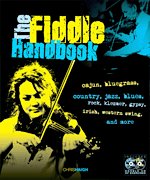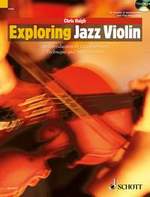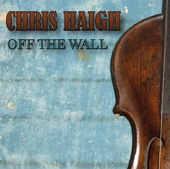
MENU TO FIDDLE STYLES:
HOW TO PLAY FIDDLE WITH A SINGER
When you first learn the fiddle, you almost certainly take one of two routes. Either you take the classical path, learning to read music and perform set tunes. Or you might go straight to “fiddle music”, probably playing the Celtic or American repertoire, either by ear or from music. Either way, you might be feeling very pleased with your progress until one day some singer/guitarist asks you to play along with their song. And you find your reaction lying somewhere between incomprehension and pure horror.
Sure, you’ve seen people do it, but how? The singer won’t be much help. Most guitarists don’t read music so they’re not about to write you out a part. Plan B- buy a book. It worked when you wanted to learn Irish, Cajun, Balkan and Inner Mongolian fiddle styles. The shelves are groaning with them. But try searching for a book on how to accompany a singer on fiddle and I think you’ll draw a blank. The problem is that whilst it’s easy to find a “fixed” part for any fiddle tune you might want to play, and the guitarist will have a set of chords and a melody to work from, you’re blithely expected to come up with your own part, on the spot, and without tears or tantrum. So, down to business.
WHAT KEY IS THE SONG IN?
Your first task is to find out what key you’re in. Sure, you can ask, but far better to learn to work it out for yourself. You should learn to do this quickly, by ear, simply by listening to the first line of the song, and checking a few fiddle notes for reference. Hum along with the chords or melody, and then simply find the note at which your humming is happy to finish without any feeling of incompleteness. Think of this note as a full stop. As an example, hum the first four bars of twinkle twinkle little star. When you get to “How I Wonder What You …”, pause. Try some alternatives to the final note for “Are”. Any other note than the right one is going to sound incomplete and unsettled, and that’s not just because you already know the right note. It’s because this note, that brings the tune to rest, is the key note. Let’s say this tells us it’s the key of C. This will usually also be the first chord of the song. Next question. Is it C major or C minor? I’d say the majority of songs you’re likely to hear will be in a major key, but if it sounds “sad”, and if the third note of the scale (the mi in do re mi) is a minor third (3 semitones) above the root, as opposed to 4 semitones, then it’s in C minor. So we’ve figured out, without having to ask, that the song is in C major.
FIGURE OUT THE CHORD SEQUENCE
You’ve now got to get a map of the chords as they change. If you’re dealing with a number by Return To Forever, or maybe a selection from “Tales from Topographic Oceans”, you may have an uphill struggle here. However, the chances are you‘re being asked to play on a folk, pop or country song. Not for nothing is country music described as “three chords and the truth”. You can now make the astounding prediction that the song will be mostly, or even completely constructed from the root (I) which is C; the subdominant (IV) which is F, and the dominant (V), which is G. Don’t worry if you’ve not come across these terms before. Now listen through the song and look for these chords. You can play a “broken chord” or arpeggio on your fiddle just by playing the root, third and fifth of the chord (an F chord, for example, is F, A and C). With a bit of luck you’ll find that these three chords are all you have to deal with. You now need to make a chart, either in your head or written down You should end up with something like this; here’s “You are my Sunshine”. C/C/C/C F/F/C/C F/F/C/C/ C/G/C/C Each chord represents a bar, that is to say four steady beats.
USING CHORDS ON THE FIDDLE
So far so good. But what do you do with these chords? You can start by playing the root note of each, one long note per chord. This will work, but it’ll be pretty boring. You can improve it by finding some double stops (where you play two notes at once on adjacent strings). There’s a whole selection available for each chord. The C chord, for example, can be C on the G string and E on the D string; or E on the D string and C on the A string; or again C on the A string and open E on the E string. Spend some time finding the different alternatives. Now you can either play long double notes, or do off-the-beat rhythmic chops. This is something bluegrass or old timey players will already be familiar with. You can also try the “Nashville Shuffle” (even if it’s not a country song)- 2 notes slurred, 2 notes separate- doo ah dad a, doo ah dad a. These three options; long notes, chops and shuffles give you a lot of different approaches to “rhythm fiddle” playing. Try swapping from one to another as the song moves from verse to chorus or bridge. You can enhance your chord playing by playing “passing scales” which telegraph any changes of chord. So if you’re shuffling in C, and the chord is about to move up to F, pause from your shuffling and do a scale C,D,E,F, then another ,descending scale when the chord moves back down again. This will knot the whole thing together very nicely, and show everyone that you know what’s happening and are not simply reacting in blind panic whenever the chords change
MELODY, FILLS AND SOLOS
Of course the fiddle is capable of far more than just being a rhythm instrument. You can also play parts of the melody in unison with the singer, maybe a harmony (a third above is usually easiest to find), or you can play improvised melodic phrases in the spaces left by the vocal line. That is of course easier said than done. What melody? What phrases? If you draw a blank here look no further than the trusty pentatonic scale. In the key of C, the notes of this scale are C,D,E,G and A. Playing up and down this scale will see you right no matter which of our three chords is being played. The scale is constructed in such a way that any 2 or 3 adjacent notes will form a simple melodic phrase which will sound “thought out”, even if it’s actually completely random. The melodic content of your song playing should ideally bear some relation to the style of the song. If it has a bluesy element to the singing, a blues scale will sound good (simply add an E flat to your pentatonic scale). If it’s bluegrass, the chances are you’re already working on a set of off the shelf “hot licks” which you can drop in at any point in a song. If it’s a traditional Irish song, being performed in a traditional way, avoid playing too many country influenced phrases. Eventually you’ll develop the art of weaving in and out of the song, perhaps playing phrases no more than 2 bars long. If the singer starts glaring at you whist he’s singing, the chances are you’re playing too much, and are conflicting with the vocal line. If you want to keep the gig, you’ve got to shine discreetly and remember that your main job is to make the singer look good!
Here I am playing with Paul Kerr on "You've got a friend in me"
(This article first appeared in Fiddle On magazine)


